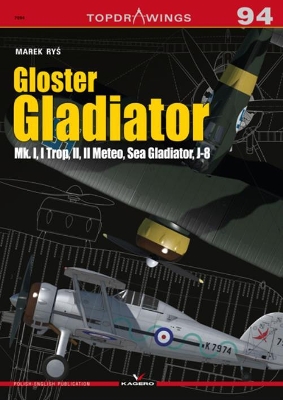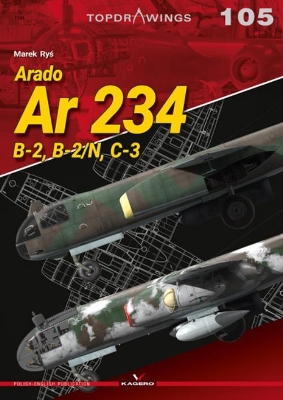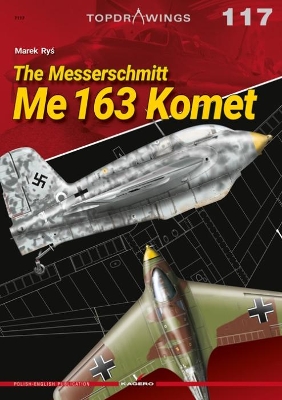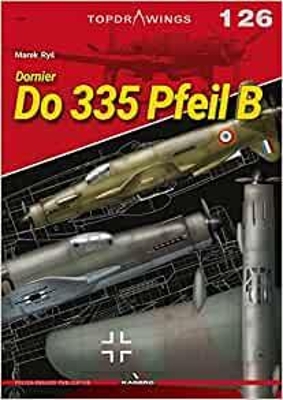TopDrawings
4 total works
Gloster Gladiator is a British fighter constructed at the Gloster Aircraft Company. The prototype was created in 1934. It was powered by a 645 HP Bristol Mercury VIS engine. Gloster Gladiator Mk I had a 8382 mm long fuselage, which consisted of four numbered sections. The first of these included the engine bed. The second front fuselage, the third – the rear fuselage, and the fourth – tail. The arrangement of instrumentation and equipment inside the truss was marked with letters or numbered from one to eight fuselage partitions corresponding to the distances between the frames. Clearly straight main panels with a span of 9845 mm were built around two Hawker steel girders. The upper and lower supports of the girders were made of rolled octagonal elements, and the wavy lining provided strong points for attaching four aerodynamically profiled transverse struts. Such wing structure was finished with light alloy ribs, stringers and steel and duralumin spreader bars.
As the first functional jet engines became available, the RLM published a requirement for a reconnaissance aircraft capable of long-range patrols over Britain, all the way up to Scapa Flow. The task to build the machine was given to Arado, who put Rüdiger Kosin in charge of the design team. The initial E370 project was gradually tweaked and modified until it evolved into its final form as a single-seat aircraft powered by two jet engines in underwing pods, designated Ar 234. In order to maximize the aircraft’s range, Arado’s design team embarked on a radical weight-shedding crusade. Among the components eliminated from the design was the conventional landing gear, which was replaced with a jettisonable three-wheel trolley used for take-offs and retractable skids mounted under the fuselage for landings. These design features were incorporated into the first A series prototypes, powered by Junkers Jumo 004A engines.
The B-2 was a bomber version, with a maximum bombload of 1,500 kg and the B-2/N a night fighter version. The C-3 was the multi-purpose version, armed with two 20 mm MG 151/20 cannons beneath the nose.
The B-2 was a bomber version, with a maximum bombload of 1,500 kg and the B-2/N a night fighter version. The C-3 was the multi-purpose version, armed with two 20 mm MG 151/20 cannons beneath the nose.
Although the German Me 163 Komet rocket fighter was created as a remedy for the mass air raids of the Allied air force on Germany, its origins date back to 1938. Alexander Lippisch then began work at the DFS factory on a tailless rocket-propelled aircraft, designated as DFS 194. At the beginnings of 1939 the project was handed over to the Messerschmitt factory and there it developed into the Me 163A. Two prototypes of this aircraft - V4 and V5 - were completed in 1941 and flown as gliders. Then the V4 received a Walter HWK R.II rocket engine with a thrust of 7.5 kN, and on October 2, 1941 H. Dittmar achieved a speed of 1003 km/h on mentioned plane. Thirteen Me 163As were built for training.
The Dornier Do 335A did not meet all the Luftwaffe requirements. First, the cockpit armor was too weak, which excluded the machine from the role of a fighter intercepting heavily defended Allied bombers. Therefore, in the summer of 1944, a modified version of the Do 335 - marked with the letter “B”- was developed. The main difference was to be an armored pilot’s cockpit with a new, easier to manufacture windscreen. The front wheel had larger tire. To be able to retract it without any changes in the landing gear bay construction, it was rotated around the leg axis by 45° during the retraction. The rest of the equipment and weapons were to be the same as in the case of the Do 335A-1. The developed version was designated Do 335B-1, but it was quickly abandoned in favor of heavily armed versions B-2 and B-3, known as Zerstörer. The prototypes of the version B-2 were Do 335M-13 and M-14 powered, like the A-1, by the DB 603E (front) and DB-603QE (rear) engines, but with significantly reinforced armament. The 15 mm MG 151/15 cannons above the engine were replaced with a 20 mm MG 151/20, and the wings were fitted with two 30 mm MK 103 cannons with 70 rounds per barrel. The same cannon fired through the propeller axis.



